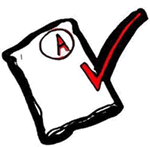If You Are the Actor .....
Ask Questions |
After your research using electronic sources and books, answer the following questions in your Journal or on your graphic organizer. 1. Who are your fellow actors and what were some of their famous roles? 2. What are the different kinds of actors based on economic circumstances? 3. What do the actors' costumes look like? What fabric was used? What times are the plays performed? 4. How many people make up an audience in the Globe Theatre? Can you find how much the tickets cost? 5. What are the dimensions of the Globe Theater (make sure you are finding information about the original Globe, not the new one)? 6. What did you enjoy the most or the least about your role? |
||||
|
|
We will be gathering information from a variety of sources. NBMS Online Resources Selected Web sites
|
||||
|
Analyze your research notes to determine if you have answered your questions.
Evaluate the effectiveness of your research for the task.
Are you ready to create your BCR? |
||||
Produce |
Product: BCR After carefully considering the four roles you explored, address the following prompt in BCR format. As we begin the Discoveries unit, discuss three important discoveries you made about life in Elizabethan England during your research. Explain each discovery and why you found it interesting. Then explain how studying life in Shakespeare's time might influence your reading and understanding of Shakespeare's play, "As You Like It." |
||||
|
Present |
Scoring Tool for Presentation Rubric for the Brief Constructed Response (BCR) A The response demonstrates an understanding of the complexities of the text.
C The response demonstrates a general understanding of the text.
D The response demonstrates a minimal understanding of the text.
E The response is completely incorrect, irrelevant to the question, or missing. |



 Organize
Organize 
